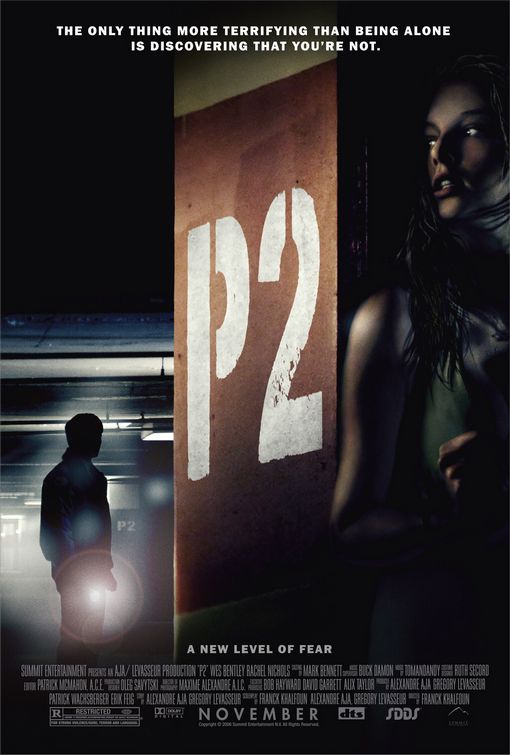The narrative of 'Shadow of Your Past'
'SOYP' tells the story of successful lawyer Shania Mollcott who is being stalked by the just-released rapist Jeff Richardson who she helped convict. When Richardson finally manages to capture Molcott he keeps her locked up in an abandoned shack and threatens her. She almost manages to escape, but is captured once again. The police find out where Molcott is being held and start to plan how to get her out. They burst in and have a shootout with Richardson which he manages to escape from. By the end of the film Molcott has had to relocate and change her name, as Richardson is still on the loose.
Form
My opening sequence uses many conventions for film openings, such as introducing the main character, by focusing on Shania Molcott's morning routine, and establishing the location, which is done through the shots of the home and the street. This is shown in the stalker film 'P2' (2007), which starts off with one long unbroken establishing shot of the garage setting before introducing the main character.
Our sequence is also conventional in that it sets the tone for our film, with it's tension and threat. This is common in films of all genres, and is shown aptly by one of our main inspirations, thriller 'Se7en' (1999), where the titles are shown over disturbing music with dark and disturbing visuals.
Overall, I believe my opening sequence does an apt job of using the typical conventions of an opening title sequence by introducing the main characters, the London setting and the tone.
Genre
The following presentation focuses on crime/thriller conventions and how we attempted to implement them into our sequence.
Narrative structure
The presentation below looks at the way we used genre conventions to create our narrative structure:
We also used Barthes codes to make our sequence more narratively interesting - for example by using the action code to create the red herring situation, as the viewer will assume due to the previous shots establishing Richardson's presence, that he is the person running up behind an unaware Molcott. Due once again to the previous shots the viewer assumes that Richardson is going to attack Molcott or harm her in some other way, therefore increasing fear levels and tension before it is dissolved by the reveal that the person running towards her is just a jogger.
Style
The style of our film is very much conventional of the crime/thriller genre in many of it's aspects. In terms of visuals it is desaturated in a way similar to films such as 'Se7en' and the TV series 'Sherlock'. in order to give the sequence a more serious and gritty look. The main colours of the sequence are washed out grey, black, white, brown and green colours, giving the sequence an overcast suburban feel.
Our soundtrack consists mainly of two different pieces of music from Freeplaymusic.com, 'Ever Evolving' and 'Codename'. These two tracks are very different to each other, with 'Evolving' being used during the calm waking up scenes and 'Codename' being used to increase tension during the 'red herring' scene. The music tracks both link with the pacie and rhythm of the scenes they soundtrack, with the longer, more intimate shots of Molcott having 'Evolving' playing over it, while the more intense outdoor scenes contain faster music which builds up to a tense climax in a similar way to the scene.
 |
| The titles in my finished sequence |
































